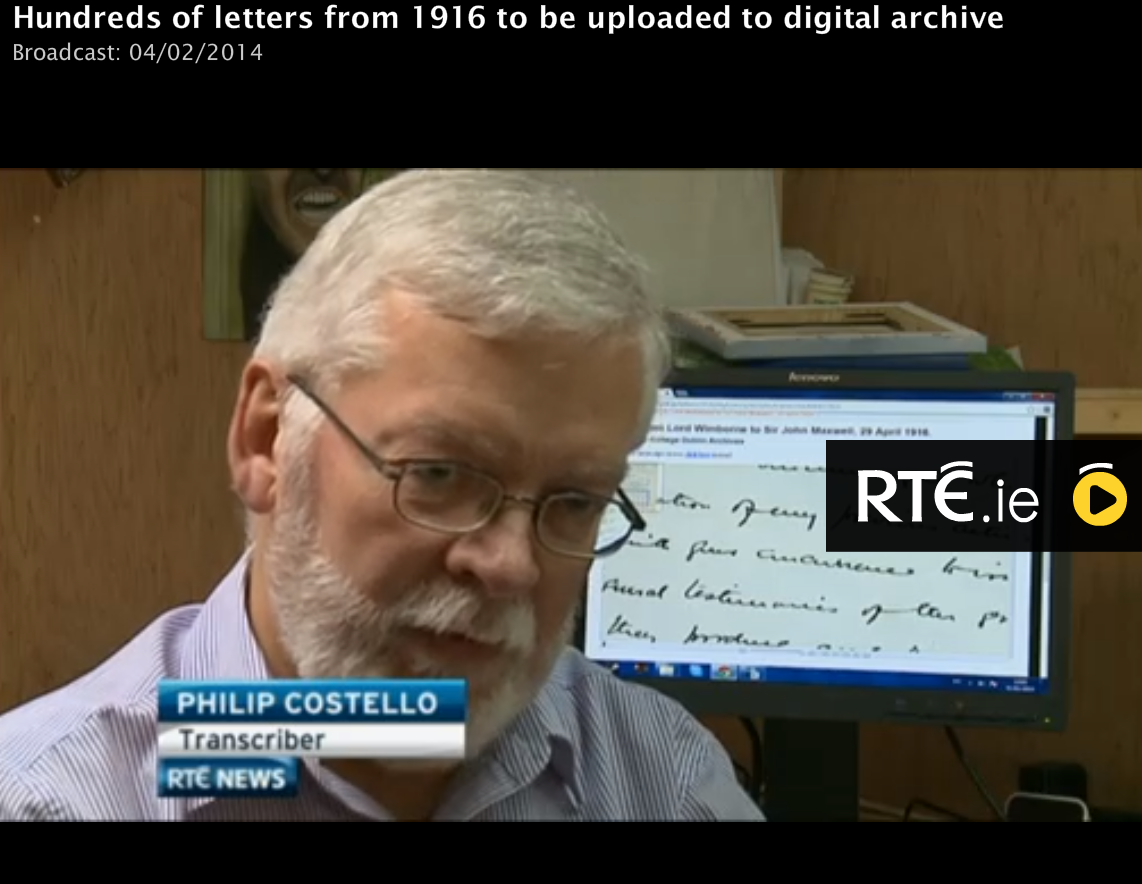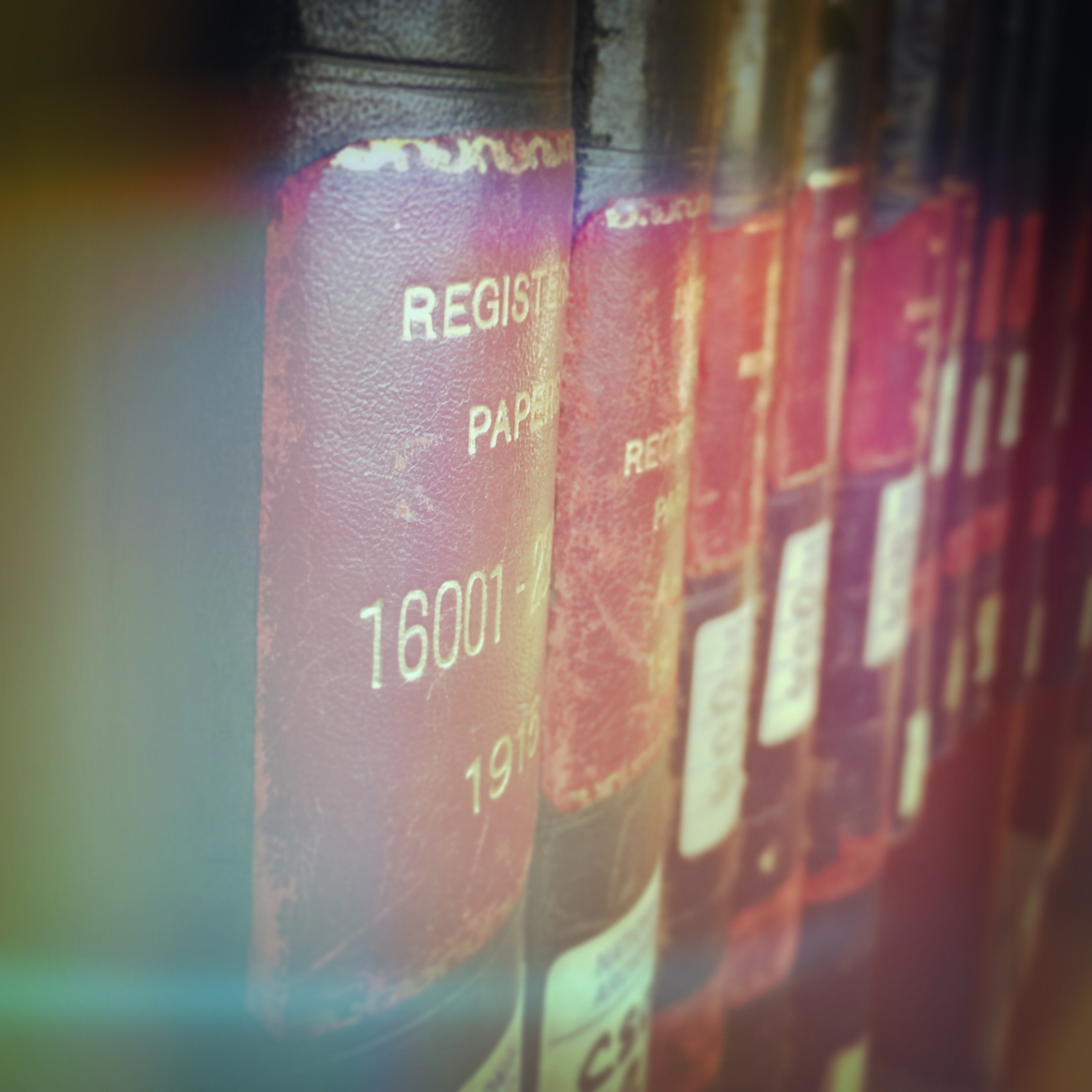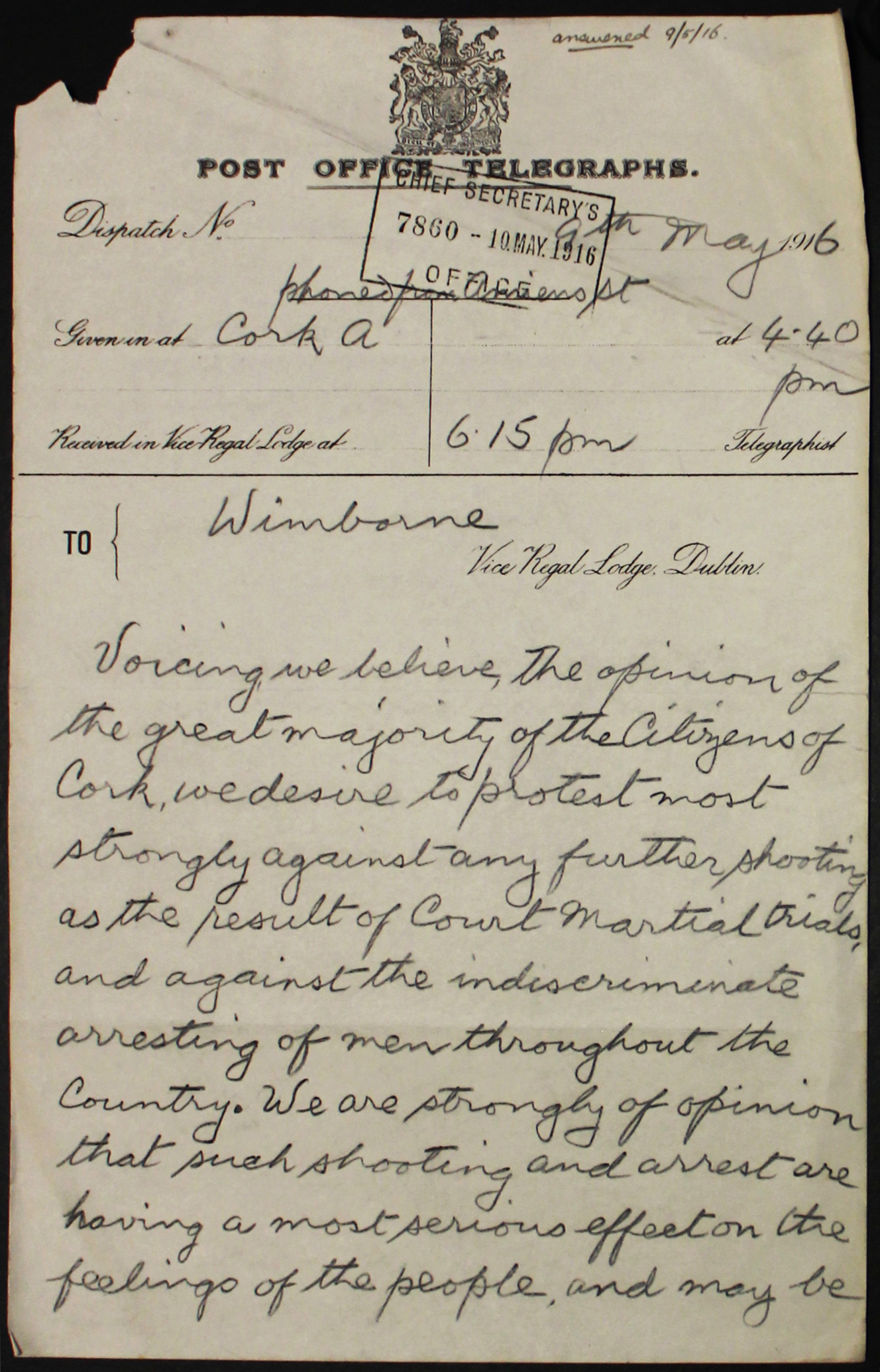 The Letters 1916 Project was featured on the RTE Six One News this evening. Philip Bromwell, RTÉ News Video Journalist joined our Associate Editors Karolina Badzmierowska and Brian Hughes photographing the letters of 1916 at the National Archives of Ireland.
The Letters 1916 Project was featured on the RTE Six One News this evening. Philip Bromwell, RTÉ News Video Journalist joined our Associate Editors Karolina Badzmierowska and Brian Hughes photographing the letters of 1916 at the National Archives of Ireland.
The report also included an interview with the project’s Principle Investigator and Editor-in-Chief, Prof Susan Schreibman and contributors: Tessa Finn, who uploaded to the transcription desk over 100 letters written by her grandparents, and Philip Costello who transcribed over 150 letters to date.
Click here to watch the Six One News on RTE Player (4 February 2014)

The featured letters are from the Registered Papers of the Chief Secretary’s Office (CSO RP) at the National Archives of Ireland. Click on the images and links below to view the letters
Letter from Thomas William Lyster to Edward O’Farrell, 8 May 1916

This is a letter from Thomas William Lyster (1855-1922), librarian at the National Library of Ireland, to Edward O’Farrell, assistant under-secretary for Ireland. Lyster writes in the hope of securing copies of the Proclamation of the Irish Republic, read from the front of the General Post Office by Patrick Pearse and distributed in Dublin on the first day of the Rising, and ‘Irish War News’, a newspaper published by the rebels during the Rising lasting only one issue, for several libraries including the NLI. Lyster points out it will ‘important for historical purposes’ and that he has already had an expression of interest from the Welsh Library.
A note on the letter by O’Farrell agrees with the letter and it was passed to ‘G’ Division, the detective branch of the Dublin Metropolitan Police, to secure copies. The enclosed minutes refer to attempts by the chief commission of the DMP to locate copies. It is noted that they had a copy of the bottom half (the proclamation was printed originally in two parts) taken from Liberty Hall where it was printed but had yet to find a full copy.

This letter is from Edward H. Andrews, honorary secretary of the Dublin Chamber of Commerce, to Arthur John Bigge (1849-1931), 1st Baron Stamfordham, private secretary to King George V. The letter enclosed a resolution passed by the Chamber of Commerce at a meeting that day.
The resolution states that the chamber wish to express the ‘loyalty of the Commercial community’ to the king, record their ‘abhorrence’ at the Rising. They also blame the Irish administration for the Rising due to their ‘unpardonable laxity’ and request that funds be supplied to compensate ‘unoffending citizens’ whose property was destroyed.

This telegraph was sent by a number of prominent Cork citizens to Sir Ivor Churchill Guest (1873-1939), 1st Viscount Wimborne, lord lieutenant of Ireland.
The message, which they believe voices the opinion of the ‘vast majority of Citizens of Cork’, requests an end to the executions and mass arrests that followed the suppression of the Easter Rising. They argue that to continue would have a ‘most serious affect on the people’ and be ‘extremely prejudicial to the peace’. The letter came on the day that Thomas Kent was executed in Cork Detention Barracks for his part in the death of a policeman was killed after his family home was raided. Eleven men had been executed in Kilmainham Gaol and three more were executed in the following days.
The signatories to the message include Rev. Daniel Cohalan, later bishop of Cork and an outspoken opponent of IRA violence during the War of Independence, the lord mayor of Cork, the high sheriff of Cork and members of the United Irish League who were by then largely a fundraising adjunct of the Irish Parliamentary Party.